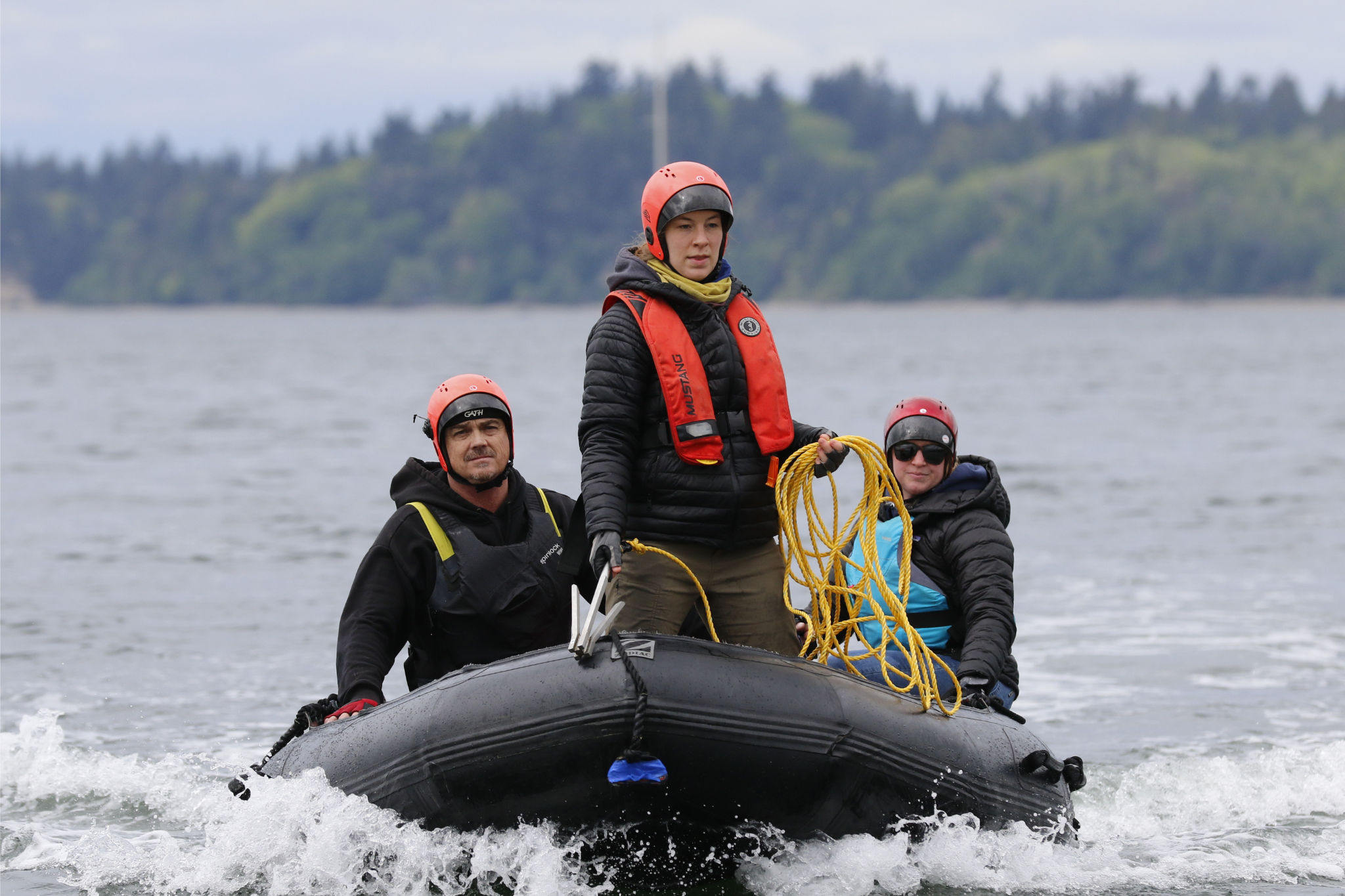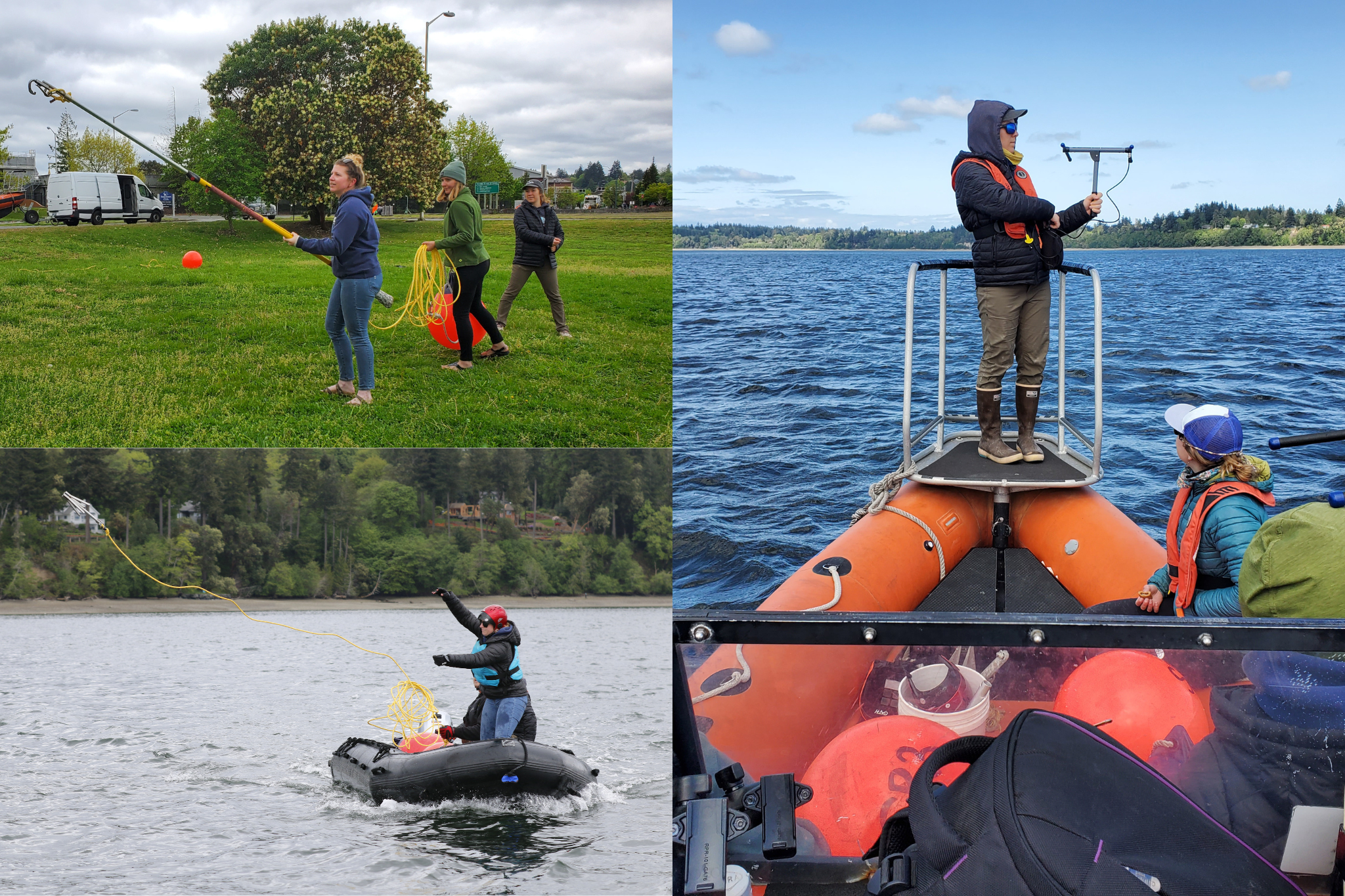Preparing for the Next Response
Staff from The Whale Museum, Cascadia Research Collective, and SR3 practice whale disentanglement skills. Photo by Cascadia Research Collective.
This spring, SR3, Cascadia Research Collective, and The Whale Museum gathered in Olympia for a disentanglement training. The ultimate goal of this collaboration was to prepare for response on the water if a whale is entangled. In 2024, there were a confirmed 36 entangled whales off the west coast.
The Pacific Northwest is a challenging area with a vast amount of coastline, requiring trained response teams to be located in strategic areas throughout the state. All whales are protected species, so disentanglements must be conducted by permitted responders working under NOAA's authorization. “Individuals should never attempt to free any entangled marine animal, including seals and sea lions,” says The Whale Museum. “All entanglements should be reported to local authorized wildlife responders who are trained to assess the situation and make decisions prioritizing the health and safety of both the animal and the responders.”
Whale responders are classified into five levels: Level 1 responders can be members of the public who know how to report entangled whales, Level 4 and 5 responders work at Marine Mammal Stranding Network organizations and are authorized to approach and remove gear from the whales.
Would you like to become a Level 1 Responder? Take the free Entanglement Response online training.
The spring disentanglement training was led by Cascadia's Level 5 responders and funded by a collaborative John H. Prescott Marine Mammal Rescue Assistance Grant. The trainees were Level 2 staff members from all three organizations who were focused on building their skills in order to advance to Level 3. With this training, plus in-the-field experience and authorization by NOAA, these trainees will be able to attach tracking buoys to entangling gear and assist in a response led by a higher-level responder. We practiced documentation, boat handling, knot tying, setting up tracking equipment and fixing it to the entangling gear, among many other necessary skills.
Responders practicing disentanglement skills first on land, and then on the water. Once the team has a hold of the entangling gear (left), a device is attached and can be found with tracking equipment (right). Photos by Cascadia Research Collective.
Cascadia stated that the primary goal of this training was to “teach Network partners the approved methods to systematically collect the necessary data for entanglement prevention while saving individual whales."
We see a wide variety of entanglements in the Pacific Northwest. The most common species of whales to get entangled are grays and humpbacks due to their feeding and migration patterns, and they often get caught in gear from commercial fisheries. Seals and sea lions can also get entangled, though they are often caught in smaller gear such as gill nets or monofilament lines, or even land-based trash like plastic packing bands.
Our organizations are prepared to address emergencies on the water, like entanglements, 24/7. Whether a sea lion or a humpback whale, together, we can respond with the training and expertise needed to safely gather data and help the animal in need.
All response activities occur in coordination with NOAA and under NMFS permit # 24359.


